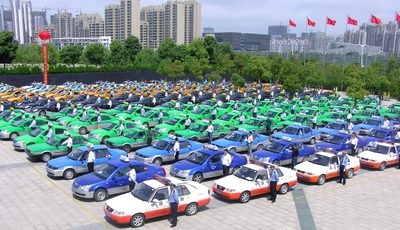
Translated by Andrew Vanburen from: 短炒順勢而行 長揸先秤基本因素 (中文翻譯, 請閱讀下面)
IT IS EASY to get bogged down in the seemingly endless losses that most of us are suffering on a daily basis in the stock market.
In such a prolonged bearish environment, the paltry returns that savings accounts offer even begin to look tantalizingly attractive – if it weren’t for the fact that in most countries around the region, the rates that lenders offer are still below the growth in inflation.
On the corporate earnings front, quarterly results are in and things are not good.
And how can we forget as the holiday seasons approach and a forgettable 2011 winds down that we have more bad news to look forward to with full-year earnings announcements?
Are there any trees high enough to hide from the bears?
Now is a perfect time to truly scrutinize third quarter reports, and work to get a leg up on where 4Q and full-year results are headed.
First of all, we all must realize that those firms with “flexible” reporting dates – firms stretching their announcements to the last possible moment of release – are very unlikely to have good tidings for investors.
It’s a rule of thumb, but it is not watertight, and some late-announcers do indeed surprise on the upside.
That being said, it’s best not to bet the farm on any late surprise stories.
We must also be somewhat wary of overly pessimistic guidance that might be on-the-record for various listcos as their announcements come due.

How many times have we panic-sold after some of these proclamations, only to kick ourselves as results “surprise” on the upside, and “the Street” once again looks somewhat foolish for their rash rash of downgrades?
The New York markets, with their after-hours trading, often provide perks to those who stick around after the lights go out (including insomniacs) who reap the harvest after a late-breaking story on M&As, guidance revision, management shuffles or new product breakthroughs.
There is nothing more frustrating to a shareholder than to nod off late at night after a final ticker check only to wake up at dawn to find a star stock in your portfolio has moved down double digits during the witching hour.
And of course there are those less scrupulous pollyanas in the corporate world that hate to be the bearer of bad news at any cost, and massage the math to find the bright side of any balance sheet or sales outlook.
Fool me once...
As the saying goes, “Fool me once, shame on you. Fool me twice, shame on me.”
Seasoned investors are likely to buy into upbeat guidance at first. But losers have long memories and if shareholders recall putting their chips on faulty guidance once, the more savvy among them will probably not take the bait a second time.
In other words, overly sanguine forecasts and guidance revisions can fight off the bears at first, but if they prove false, they will only be crying wolf if they try it again anytime soon.
It is important to keep in mind that in many ways, the “art” of short-term forecasting is a far less exact science than is predicting long-term results.

By way of example, let us look at the manager of a taxi fleet.
He may learn from the radio dispatcher that his troops are amassed around the airport several miles from the city center, frittering away their morning shift while idling in line and producing nothing but expensive petrol fumes.
Meanwhile, the company's cabs remain unmanned, save from the driver, and the clock ticks slowly and agonizingly closer to noon.
Then, all of a sudden, dozens of cabs in front of your team give up the fight, call it a day, and head back to headquarters with empty vehicles. At the same time, several long-haul, wide-body international flights arrive ahead of schedule and there is a massive exodus of humanity from the front gate of the airport, all frantically waving for a taxi, meaning... paydirt.
By a slight stretch of the imagination, let’s say you owned “stock” in this taxi firm and monitored its revenue flow from market opening right up until lunchtime.
Unless you had money to burn, you would begin to get anxious as your drivers inched forward in an endless line of vehicles, with no passengers in sight.
But if you only waited until lunchtime, you would have recouped your investment – and then some – as your troops raced back with sleepy fares to the financial district at 110 km/hr in light traffic, only to immediately be picking up new passengers as the jet-lagged crowd disembarked.
My somewhat roundabout message here is this: In downtimes, don’t make the mistake of assuming “This is as good as it gets.”
Sometimes, after a good hearty lunch, things always find a way of picking up.
In this extended bear market, there is nothing wrong with thinking long.
See also:
Money Troubles? Five Well-Known HK IPO Sponsors Under Scrutiny
INVESTING ADVICE: Don't Pummel Your Brother To Death
短炒順勢而行 長揸先秤基本因素
季度業績公布,是件惱人煩事。
預期今季業績差,先跌為敬。預測好,公布出來差過預期,先抽高再散,更傷。預測好,公布對辦,管理層「先天下之憂而憂」,發布會上交低兩句前景未明,調低盈利指引,又要跌。美股市場,更為慘烈,設有「收市後時段」,一面公布一面交易,一覺醒來,跌幅有雙位數,不是奇事。就算是矢志不渝的淡友,也總有些季報,明明惡劣不堪,卻報稱「優於預期」,最終橫遭挾死。

要估計短期的業績,可能比推算長期績效,更加困難。用一個簡單例子說明:一位的士大佬,無論行車經驗多久,都很難猜中某一個上午的利潤。究竟是中頭獎,由港島入機場,抑或狂拍烏蠅,隨機性成分極重。相反,如果要估一個月,甚至一年的收入,則比較可行。而且股價的走勢,還包含了他人的看法,及對看法的看法,變化繁多,無得估嘅。這還沒有計入,很多人是用衍生工具,押注股價的走向,當結果與預期大幅偏離,被迫作出反應,趨勢會是愈演愈烈。
業績太短難估
但正如一個司機,是否繼續揸的士;又或者一個投資者,買不買一個的士牌,是不應該受到某天上午,生意好不好而下定論;當然更不會因旁人指指點點,而貿貿然轉軚,有心長揸的股票,也是一樣。與其追求「精確的錯誤」,估中都無獎,倒不如探索「模糊的正確」,但求大方向無誤便可。
評估長揸對象,可從兩大方向入手:首先,將心儀股票的利潤率(每股盈利除股價,即PE調轉,E/P),與長期債息相比。原理簡單:買債一刻,已鎖定回報(世上確有希臘、意大利,但不是全世界都如此),按年本利歸還;但生意利潤,可增可減,賣盤(沽股票)也未必有人要,所以利潤率應該高過債息。如果E/P夠高,下一問題,就是未來幾年,盈利會否狂跌,還是有增長機會。思前想後,都不能肯定,不用心急,長揸對象,買遲一點是不會死的。如果最終難下定論,代表公司已經超出閣下所能評估的範圍,請狠心說句:「Next!」
長揸先睇利潤率
現行利潤率超低的股票,並非絕不可買。但要明白,買入是在賭將來極速增長,去蝕頭賺尾,追回債券的回報。一旦增長不成,股價便要跌許多,令利潤率返回正常水平,可能永不復原。如果沒有甚麼理由,認定增長必然出現,不妨稍等,或者最多極小注。
請留意,上述的所謂盈利增減,並沒有要求複雜的計算,反而更多是常理的推斷。銀行、保險,幾年後點?唔知?Next!維他奶(345)、大快活(052)?未來幾年,衰過做女嗰時?機會較低,咁就慢慢計E/P,睇位買。
至於短炒,可以睇圖睇盤路,一湧而上;可以業績後先順勢而行,結合衍生工具,追買、追鞭,千萬不要枉費心神,做盈利預測,和預測別人的預測。
請閱讀:
COMTEC SOLAR: ‘Buy' With 134% Upside, Says Yuanta; But 'Hold' Says UOB
GOLDEN EAGLE Top Consumer Pick; Sector To Trough In 1Q







